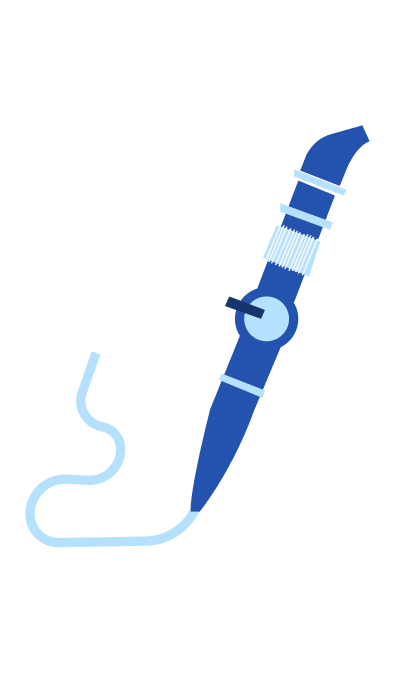Related topics for further reading
How it works
This treatment is used to remove small to medium-sized stones from the kidneys or ureters.
During a ureteroscopy, no cuts are made in your skin. Instead, a small tube with surgical tools is passed through your urethra (the tube that carries urine) and into your urinary system. The procedure can be done while you’re asleep under general anaesthesia, or while you’re awake but numb from the waist down with spinal anaesthesia, so you won’t feel anything.
The doctor uses a thin tube called a "scope," which is gently inserted through your urethra, bladder, and into the ureter, reaching your kidney. The tube has a small camera on the end, so the doctor can see the stones. Then, small surgical tools are passed through the scope to remove any small stones.
In cases of larger kidney stones, the doctor will use a laser through the scope to break the stone into smaller pieces. Some of these fragments are then removed with a small basket, while others are left to pass naturally when you urinate.
After the procedure, your doctor may place a small temporary tube called a stent in your ureter. The stent helps keep the ureter open, allows urine to flow easily, and supports healing if the ureter was irritated or slightly damaged during the procedure. The stent is usually removed after a couple of weeks.
This animation shows what happens during a ureteroscopy in more detail.
This chapter contains general information about kidney stones. It is not a substitute for professional medical advice or treatment. Always consult your doctor or healthcare provider for guidance on your individual medical situation.
Last updated: July 2025
Reviewed by:
- Dr. Amelia Pietropaolo (YAU Working Group on Endourology & Urolithiasis)
- Dr. Riccardo Lombardo (Guideline Panel on Urinary Incontinence)



